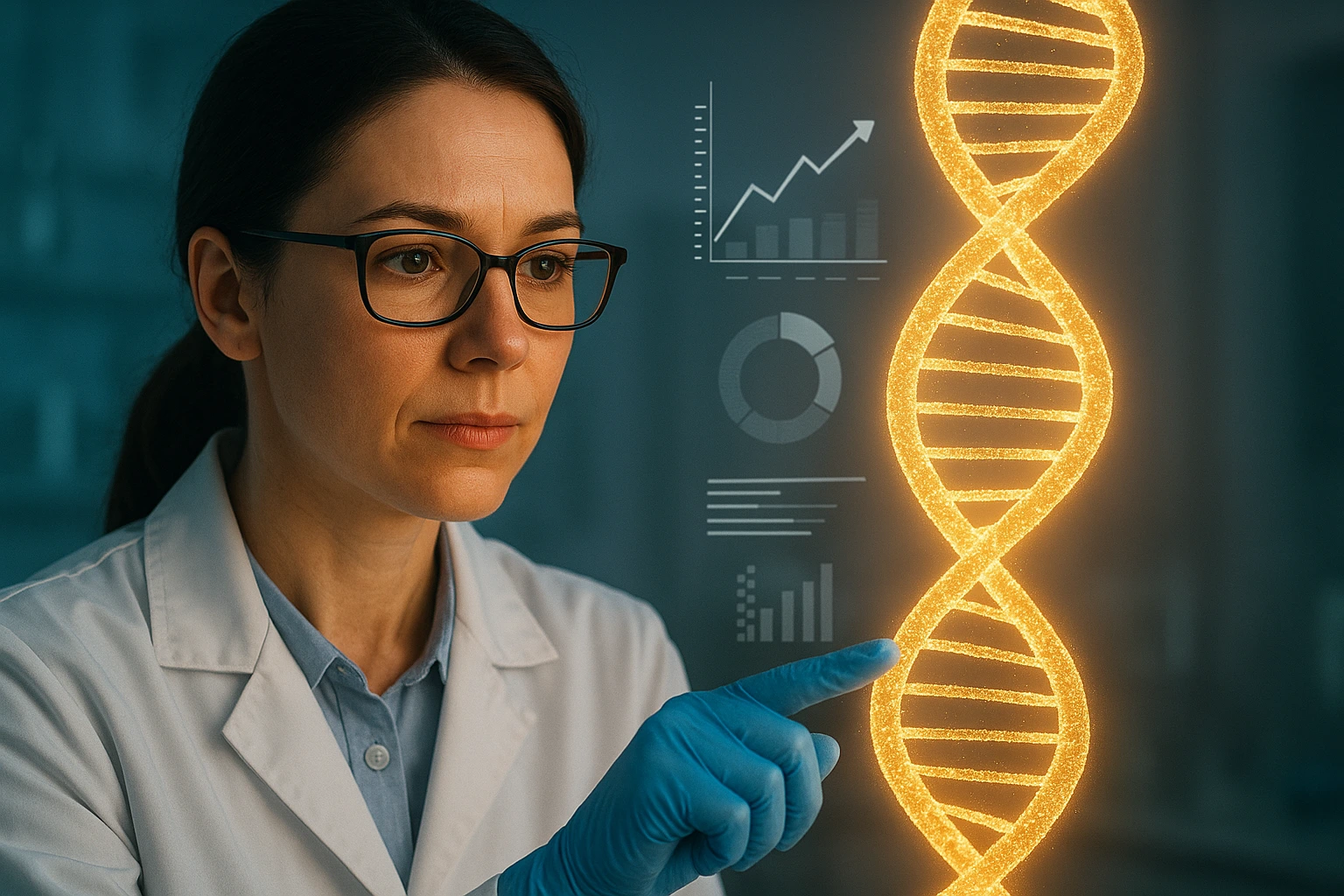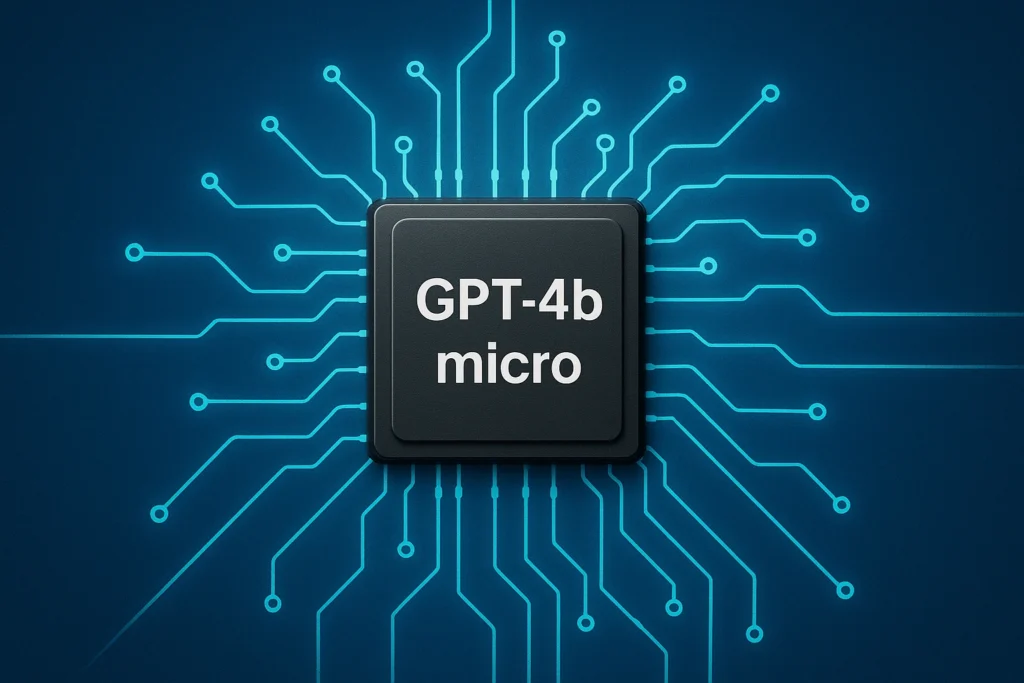AI Breakthrough in Aging Reversal: OpenAI’s GPT-4b Micro Boosts Cellular Reprogramming 50-Fold

Can artificial intelligence really help reverse aging? In 2025, OpenAI, together with longevity startup Retro Biosciences, proved it might be possible. Their new AI model, GPT-4b micro, reengineered key proteins that control how cells reset themselves, achieving a 50-fold boost in stem cell reprogramming efficiency. This means cells from older donors, once resistant to change, could now be rejuvenated faster, stronger, and with healthier DNA. The breakthrough marks a turning point for regenerative medicine, longevity research, and the future of health tech.
What is GPT-4b Micro?
GPT-4b micro is a specialized, scaled-down version of GPT-4o, created to handle the complexity of protein engineering. Unlike standard AI models, it was trained not only on protein sequences but also on:
- Protein descriptions
- Evolutionary homologs
- Interaction data
This deep biological context makes it highly effective at designing proteins, even for intrinsically disordered proteins like SOX2 and KLF4. Another unique feature is its ability to handle 64,000 tokens in a single prompt, which allows scientists to generate long, precise protein sequences with targeted properties.

Why Yamanaka Factors Matter in Aging Reversal
The Yamanaka factors, OCT4, SOX2, KLF4, and MYC (often called OSKM), earned a Nobel Prize for their ability to convert adult cells into induced pluripotent stem cells (iPSCs).
However, traditional OSKM reprogramming is slow and inefficient:
- Less than 0.1% of cells are successfully reprogrammed.
- Aged or diseased cells respond even worse.
- It often takes weeks to see results.
This has limited their use in real anti-aging therapies, until AI came into play.

AI-Engineered Proteins: RetroSOX and RetroKLF
Using GPT-4b micro, Retro Biosciences reengineered SOX2 and KLF4, producing powerful new proteins called RetroSOX and RetroKLF.
🚀 Key Results
- RetroSOX: Over 30% reprogramming efficiency in screens, far above the traditional <10% success rates. Many variants were 100+ amino acids different from wild-type yet still worked better.
- RetroKLF: Nearly 50% hit rate, outperforming expert-designed versions.
- When RetroSOX and RetroKLF were combined, pluripotency markers such as SSEA-4, NANOG, and TRA-1-60 appeared days earlier compared to the wild-type Yamanaka factors.
This leap shows how AI in cellular reprogramming can turn decades of trial-and-error biology into a fast, scalable process.
Experimental Proof: Faster and Stronger Reprogramming
The experiments confirmed that AI-designed proteins do more than just work on paper.
- Alkaline phosphatase staining proved robust pluripotency.
- In tests with donors aged 50+, more than 30% of cells expressed key markers within 7 days, a dramatic improvement over wild-type OSKM.
- Derived iPSCs formed colonies, differentiated into all three germ layers, and showed healthy karyotypes with genomic stability.
In other words, the AI-driven process is faster, stronger, and safer.
DNA Repair and Rejuvenation Potential
Another exciting discovery was improved DNA repair. Cells reprogrammed with RetroSOX and RetroKLF showed reduced levels of γ-H2AX, a marker of DNA double-strand breaks.
This matters because DNA damage is one of the biggest drivers of cellular aging. By repairing it more effectively, AI-engineered proteins may bring us closer to true cellular rejuvenation.
What This Means for Regenerative Medicine
If these results scale into clinical therapies, the impact could be huge:
- Blindness: Restoring retinal cells.
- Diabetes: Replacing damaged pancreatic cells.
- Infertility: Repairing reproductive cells.
- Organ shortages: Growing healthy tissue for transplants.
In addition, the ability to reverse aging at the cellular level could unlock new longevity treatments, once considered science fiction.
Why This Breakthrough Matters
This collaboration proves the power of domain-specific AI. Instead of using general AI, OpenAI and Retro Biosciences built a biology-first model, showing that:
- AI can compress years of research into weeks.
- Domain experts + AI = far greater results than either alone.
- The next wave of biotech innovation will likely come from AI-driven protein design.
Also Read: ChatGPT-5 in 2025: Features, Updates, and Everything You Need to Know
Final Thoughts
The collaboration between OpenAI and Retro Biosciences shows how AI in health tech can revolutionize life sciences. By redesigning Nobel Prize-winning Yamanaka factors, GPT-4b micro delivered a 50-fold improvement in reprogramming markers, a leap from under 0.1% efficiency to over 30%.
With better DNA repair, higher pluripotency, and validated results across multiple donors, this research points toward a future where AI doesn’t just analyze biology, it actively engineers it.
This breakthrough is more than a step forward in biotech, it’s a giant leap toward longevity, regenerative medicine, and possibly reversing aging itself.
FAQs
Q1: What is GPT-4b micro?
It’s a smaller version of GPT-4o, trained on protein data to engineer proteins for life sciences research.
Q2: How did GPT-4b micro improve cellular reprogramming?
It redesigned SOX2 and KLF4 into RetroSOX and RetroKLF, boosting efficiency from <0.1% to over 30%.
Q3: Can AI reverse aging?
AI doesn’t reverse aging directly, but by creating better tools for stem cell reprogramming and DNA repair, it brings us closer to age-reversal therapies.
Q4: What diseases could this breakthrough help treat?
Potentially blindness, diabetes, infertility, and organ shortages, along with broader applications in regenerative medicine.
Q5: How fast is AI compared to traditional methods?
Work that once took years of lab research can now be completed in weeks with AI-driven protein design.

Similar Posts
How Does the GPA Calculator Berkeley Transform Your Academic Journey?
Next-Gen Silicone Robot Reacts to Blink When You Touch | Totally Natural, Like a Human
AI Learning Tools Future 2030: What to Expect